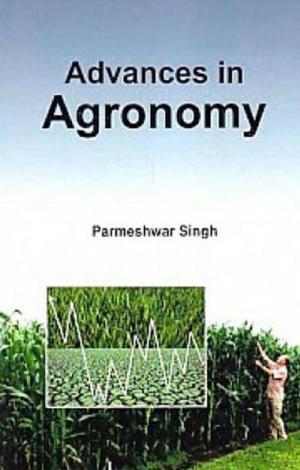Analytical Techniques in Animal Nutrition
Nonfiction, Health & Well Being, Medical, Veterinary Medicine| Author: | Saurav Singh | ISBN: | 9789387798298 |
| Publisher: | Centrum Press | Publication: | June 30, 2013 |
| Imprint: | Centrum Press | Language: | English |
| Author: | Saurav Singh |
| ISBN: | 9789387798298 |
| Publisher: | Centrum Press |
| Publication: | June 30, 2013 |
| Imprint: | Centrum Press |
| Language: | English |
Animal nutrition focuses on the dietary needs of domesticated animals, primarily those in agriculture and food production. There are seven major classes of nutrients: carbohydrates, fats, fibre, minerals, protein, vitamin, and water. These nutrient classes can be categorized as either macronutrients or micronutrients. The macronutrients are carbohydrates, fats, fibre, proteins, and water. The micronutrients are minerals and vitamins. These nutrients are typically found in edible plants, especially colourful fruits and vegetables, but also other organisms including seafood, algae, and fungi. The effects of phytochemicals increasingly survive rigorous testing by prominent health organizations. One of the principal classes of phytochemicals are polyphenol antioxidants, chemicals which are known to provide certain health benefits to the cardiovascular system and immune system. These chemicals are known to down-regulate the formation of reactive oxygen species, key chemicals in cardiovascular disease. Perhaps the most rigorously tested phytochemical is zeaxanthin, a yellow-pigmented carotenoid present in many yellow and orange fruits and vegetables. The chapters are given in details with a candid and simple manner. Each practical method has been introduced with the principle and text materials which will orient the students with the subject.
Animal nutrition focuses on the dietary needs of domesticated animals, primarily those in agriculture and food production. There are seven major classes of nutrients: carbohydrates, fats, fibre, minerals, protein, vitamin, and water. These nutrient classes can be categorized as either macronutrients or micronutrients. The macronutrients are carbohydrates, fats, fibre, proteins, and water. The micronutrients are minerals and vitamins. These nutrients are typically found in edible plants, especially colourful fruits and vegetables, but also other organisms including seafood, algae, and fungi. The effects of phytochemicals increasingly survive rigorous testing by prominent health organizations. One of the principal classes of phytochemicals are polyphenol antioxidants, chemicals which are known to provide certain health benefits to the cardiovascular system and immune system. These chemicals are known to down-regulate the formation of reactive oxygen species, key chemicals in cardiovascular disease. Perhaps the most rigorously tested phytochemical is zeaxanthin, a yellow-pigmented carotenoid present in many yellow and orange fruits and vegetables. The chapters are given in details with a candid and simple manner. Each practical method has been introduced with the principle and text materials which will orient the students with the subject.















